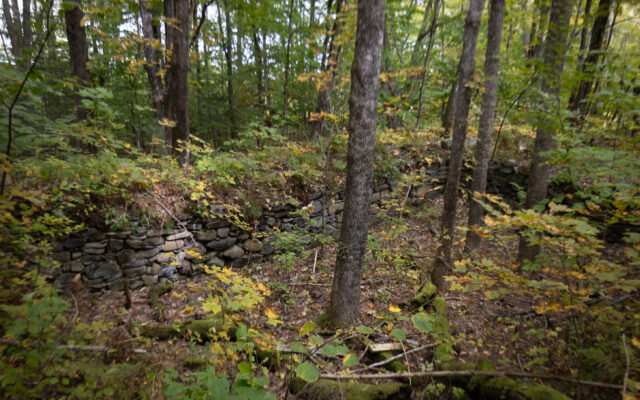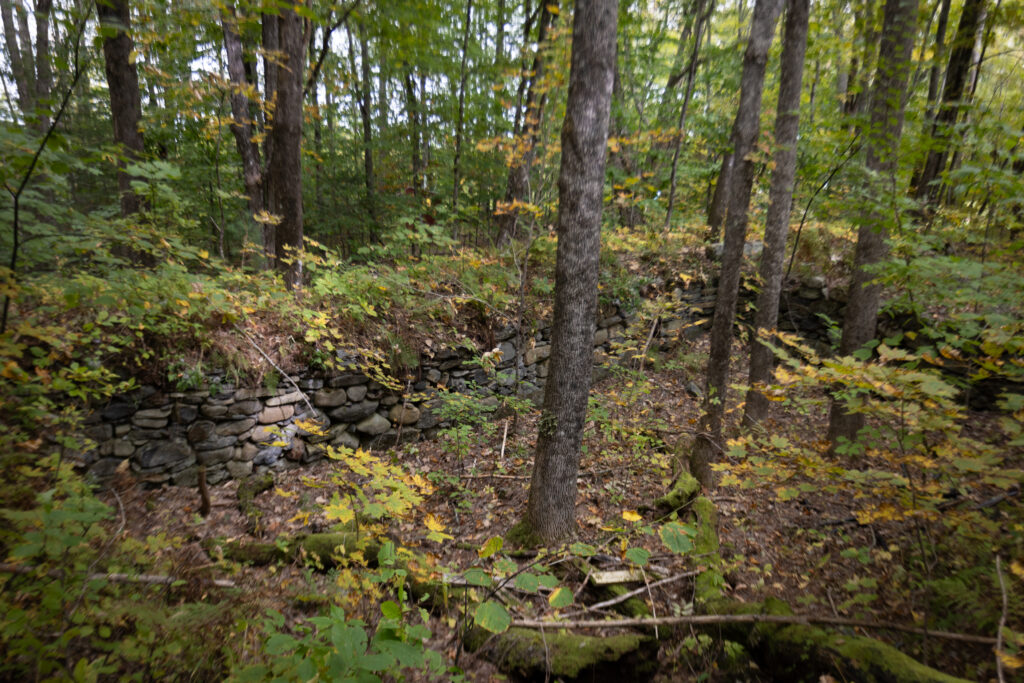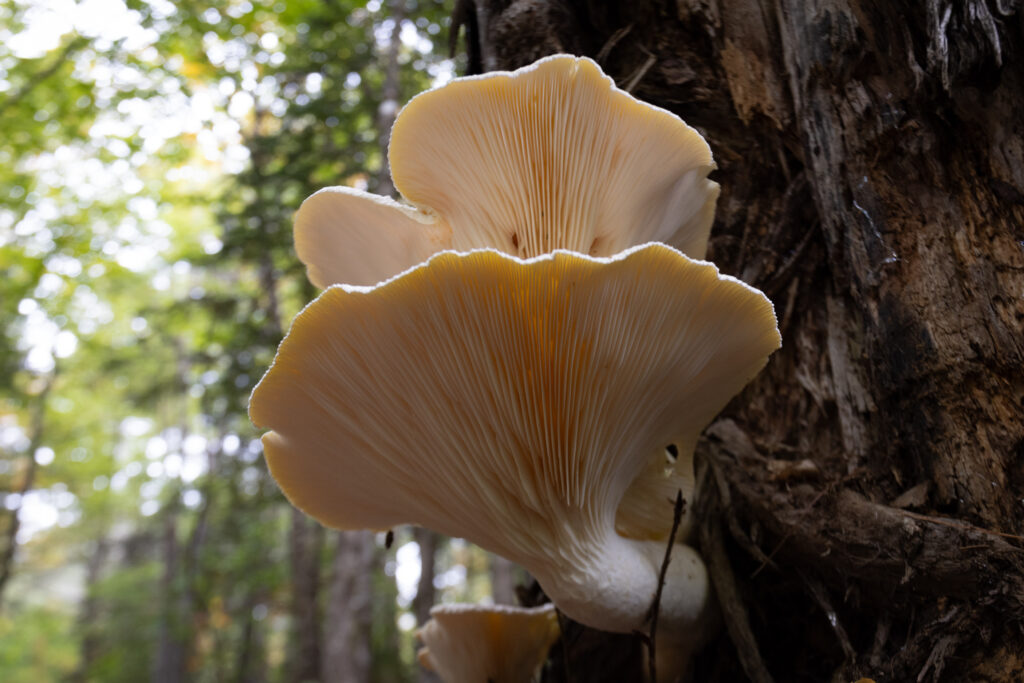
Forest managed by women has little known trail network near Brownville
By Aislinn Sarnacki
A few things have changed in Williamsburg Forest since I last visited it in December 2015 with my dog Oreo. For one thing, it’s managed by a team of women foresters.
The 180-acre forest is located in Williamsburg Township, just outside of Brownville, and it features 2.3 miles of interconnecting trails for hiking, snowshoeing and cross-country skiing. The first big difference I noted was the name.
When I first visited the property, it was called Penobscot County Demonstration Forest. That was changed to the simpler Williamsburg Forest in 2022, when the Penobscot County Soil and Water Conservation District and a group of women foresters made numerous improvements to the property. Their goal was to make it a “forest for everyone, managed by women,” according to a fresh sign at the trailhead parking area.

HOMESTEAD — The fieldstone foundation of the Decker-Lovejoy Homestead can be found in Williamsburg Forest, marked with an interpretive display.
That wasn’t the only new sign. Throughout the trail network, I noticed interpretive displays with information about the history of the property, wildlife, forestry practices, plant identification and more. I love a good educational display. It means that I can learn as I walk. Plus, such signs point out landmarks that I otherwise would have overlooked.
The network is made up of four trails, all marked with colors that match those on the trail map, which is posted at the trailhead and online. This, along with signs posted at trail intersections, makes navigation easy.
The Canyon Trail, which begins at the main parking area, is marked with green blazes. Forming a loop off of the Canyon Trail, the Shelterwood Trail is marked in white. At the end of the Canyon Trail, the Plantation Trail is marked in yellow. And branching off of that, the North Trail forms a loop that’s marked in blue.

THROUGH THE FERNS — Juno trots through some ferns on Sept. 29, while exploring Williamsburg Forest.
On Sept. 29 — with my dog, Juno, in tow — I walked all four trails, slowly, inspecting mushrooms and admiring the foliage of trees transitioning into their fall colors. It was nice to share the property with Juno, and it certainly brought back memories of Oreo, who died in 2020. They’re entirely different dogs, but both appeared to enjoy the many scents and sights of that forest.
In a place that’s so thoroughly wooded, it’s hard to imagine that it was once home to a small farming community that began in the late 1800s. Throughout the trail network are small reminders of that history, including the foundations of two homesteads.
The site of the Larson-Decker Homestead, built in 1876, can be found near the main parking area; and the impressive fieldstone foundation of the Decker-Lovejoy Homestead, built around the same time, can be found near the outdoor classroom. Signs featuring old photos and information can be found at each of the sites.

MUSHROOMS — Giant white mushrooms grow out of a tree in Williamsburg Forest.
In the 1930s, the property became a part of the White Mountains National Forest. And in 1980, the land was deeded to the Piscataquis County Soil and Water Conservation District. It has since become a place of outdoor education and recreation, though it’s certainly not a bustling location, from my experience. Being somewhat off the beaten track, it’s a peaceful place to enjoy the wilderness.
The forest is full of wildlife. In fact, it’s featured in the Maine Audubon Birding Guide. While there in late September, I noticed fresh piles of moose and deer poop. I spooked a ruffed grouse, and I watched a barred owl soar through the trees, pursued by a smaller bird, or maybe it was the other way around.
The trails are well-marked and easy to follow, but a few short sections were a little overgrown. That didn’t bother me one bit, but I do suggest wearing pants to prevent your legs from being scratched by encroaching vegetation.
This time of year, I’m often preoccupied with wild mushrooms. Many fungi species put on a final show before winter sets in. So, a major highlight of my recent trip to Williamsburg Forest was the variety of mushrooms I found. Not being a fungi expert, I can only guess at their identifications. But I believe I found some massive oyster mushrooms, each cap about as large as one of my hands, fingers outstretched.
I also found clusters of yellow-orange mushrooms with velvety brown-black stocks growing out of a dead tree. Small, red-capped mushrooms popped out of the leaf litter here and there. And on a mossy log near a brook, I found a community of brown mushrooms with frilly edges to their round caps. It was quite a whimsical scene.
If you haven’t been to this forest before and want to check it out, a great introduction would be the upcoming Fall Forestry Field Tour, running from 9 a.m. to noon on Oct. 15. Local experts will lead attendees on the updated trails, sharing their knowledge about forest management.
The tour is just one of the many public programs and workshops held by the Piscataquis County Soil and Water Conservation District.
Whether you attend the tour or visit the trail network on your own, keep an eye out for my favorite interpretive display. It points out three “legacy” white pines, which are among the oldest trees on the property. They were likely left untouched when the land was first cleared for farming.
As a Mainer, I’ve seen my share of massive white pines, but they never fail to fill me with awe.
The Williamsburg Forest trails are free for the public to use, year round. Dogs are permitted. To learn more about this property, visit piscataquisswcd.org.